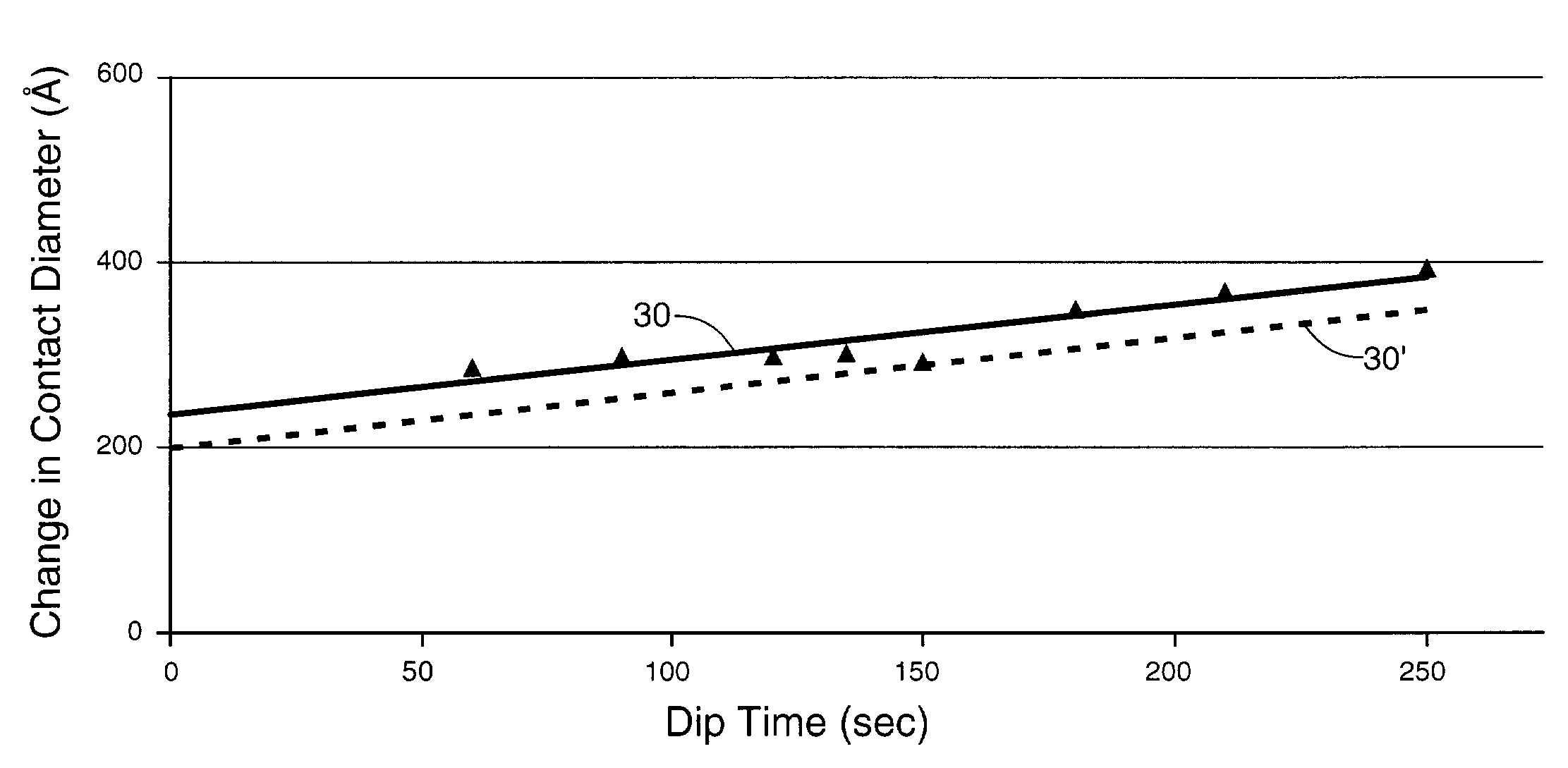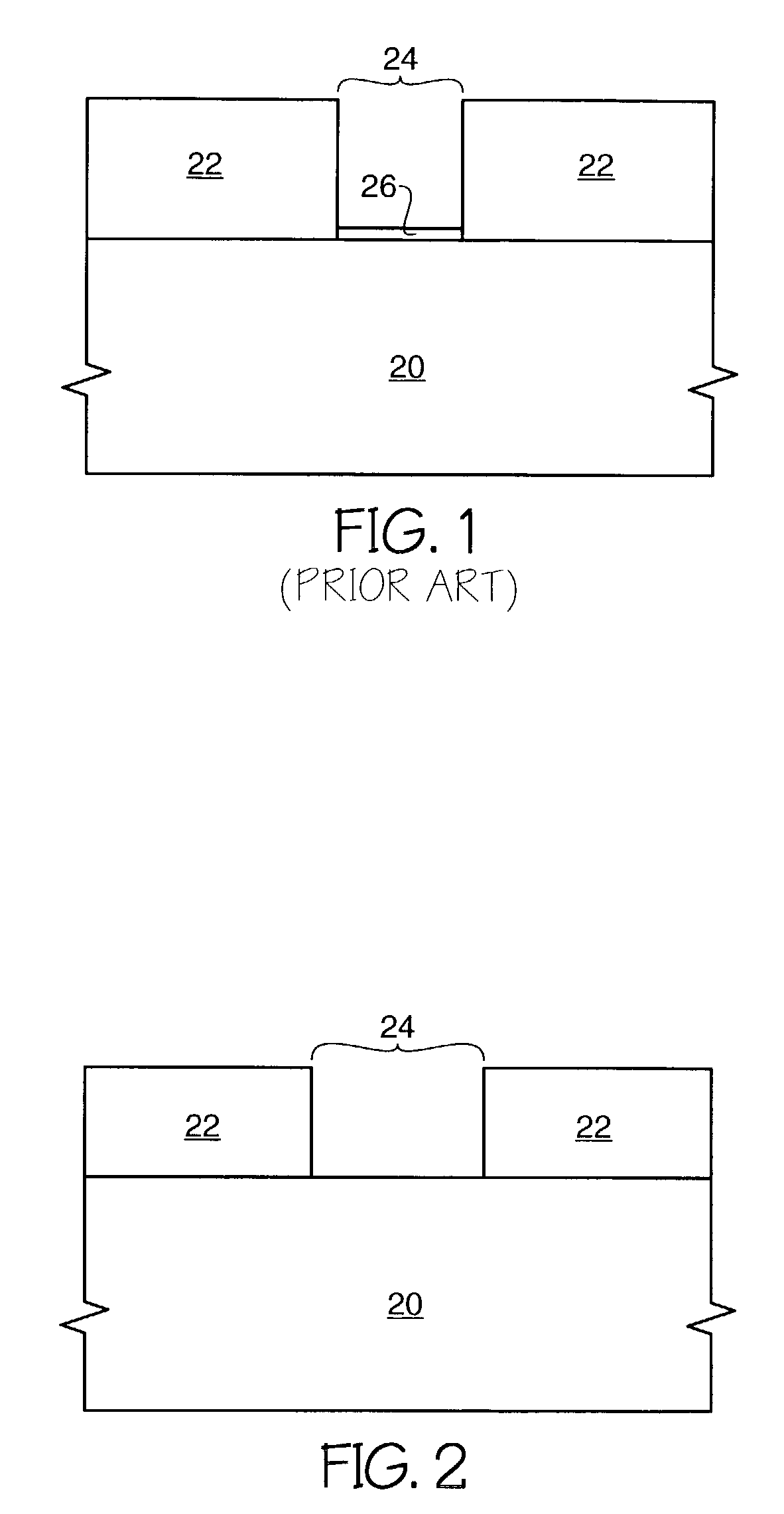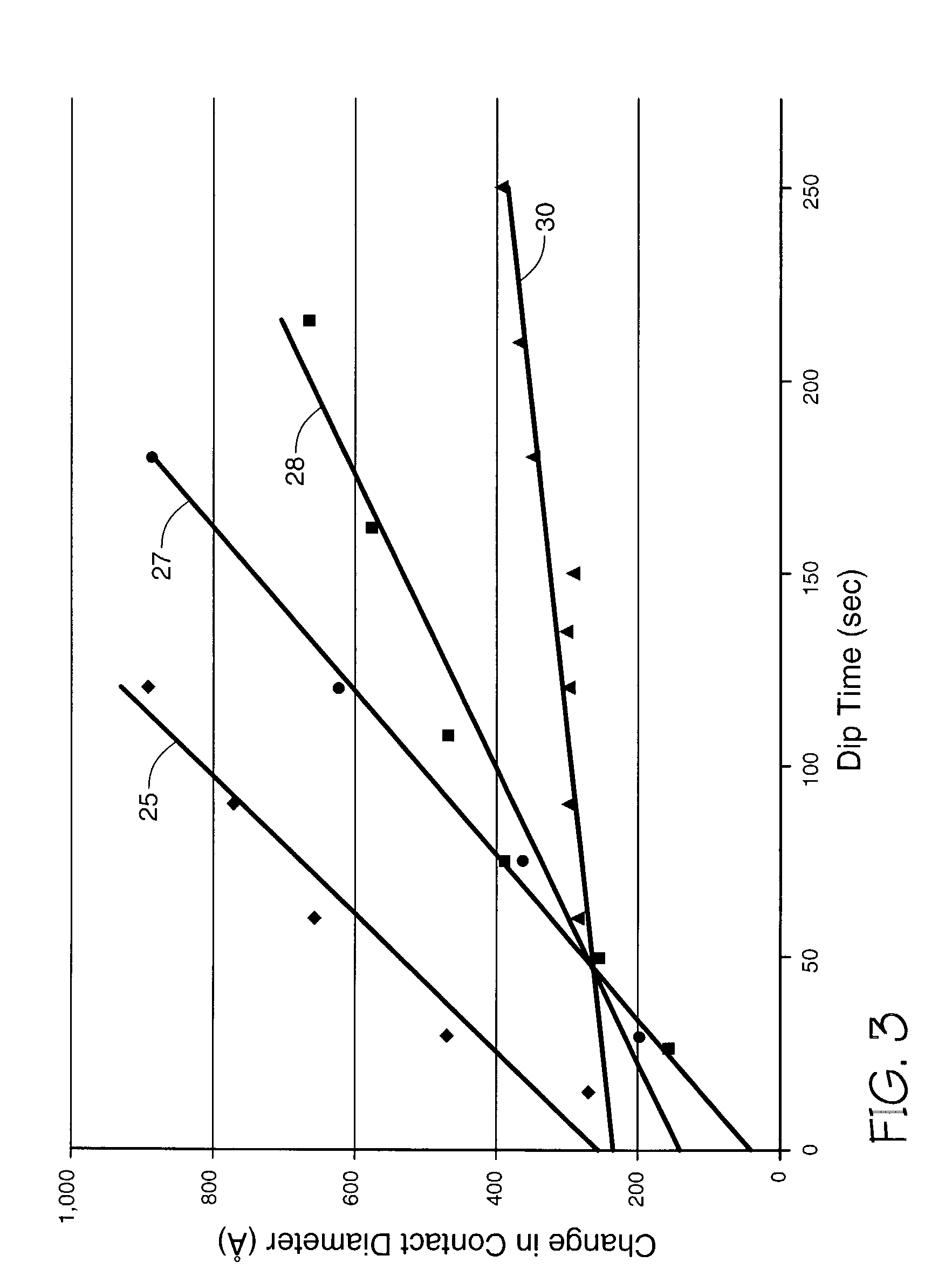Passivation for cleaning a material
a technology of passivation and cleaning material, which is applied in the preparation of detergent mixture compositions, chemistry apparatus and processes, and detergent compositions. it can solve the problems of affecting the electrical communication between the substrate and the conductive material subsequently deposited, and affecting the etching rate of the exposed material at the same rate, so as to achieve the effect of reducing the amount of initial etching of the workpi
- Summary
- Abstract
- Description
- Claims
- Application Information
AI Technical Summary
Benefits of technology
Problems solved by technology
Method used
Image
Examples
Embodiment Construction
[0019]FIG. 1 depicts an in-process portion of a prior art semiconductor device comprising a silicon substrate 20 supporting a BPSG layer 22. A contact 24 has been etched through the BPSG 22, and a native oxide 26 has been formed from the portion of the silicon substrate 20 exposed by contact 24. Regardless of whether this native oxide 26 is intentionally formed or not, or whether the native oxide 26 is desirable at some point or not, it is assumed that by some step in the fabrication process, it is desired to remove the native oxide 26 with little if any effect on the BPSG. This result is pictured in FIG. 2. The effect of prior art attempts to achieve this result can be seen in the graph of FIG. 3. That figure displays the effect of various contact cleaning chemistries (CCS) in terms of the change in contact diameter as a function of the amount of time the silicon substrate remains dipped in a particular chemistry. The change in contact diameter (ΔCD) is measured along the Y-axis in...
PUM
| Property | Measurement | Unit |
|---|---|---|
| diameter | aaaaa | aaaaa |
| diameter | aaaaa | aaaaa |
| contact diameter | aaaaa | aaaaa |
Abstract
Description
Claims
Application Information
 Login to View More
Login to View More - R&D
- Intellectual Property
- Life Sciences
- Materials
- Tech Scout
- Unparalleled Data Quality
- Higher Quality Content
- 60% Fewer Hallucinations
Browse by: Latest US Patents, China's latest patents, Technical Efficacy Thesaurus, Application Domain, Technology Topic, Popular Technical Reports.
© 2025 PatSnap. All rights reserved.Legal|Privacy policy|Modern Slavery Act Transparency Statement|Sitemap|About US| Contact US: help@patsnap.com



